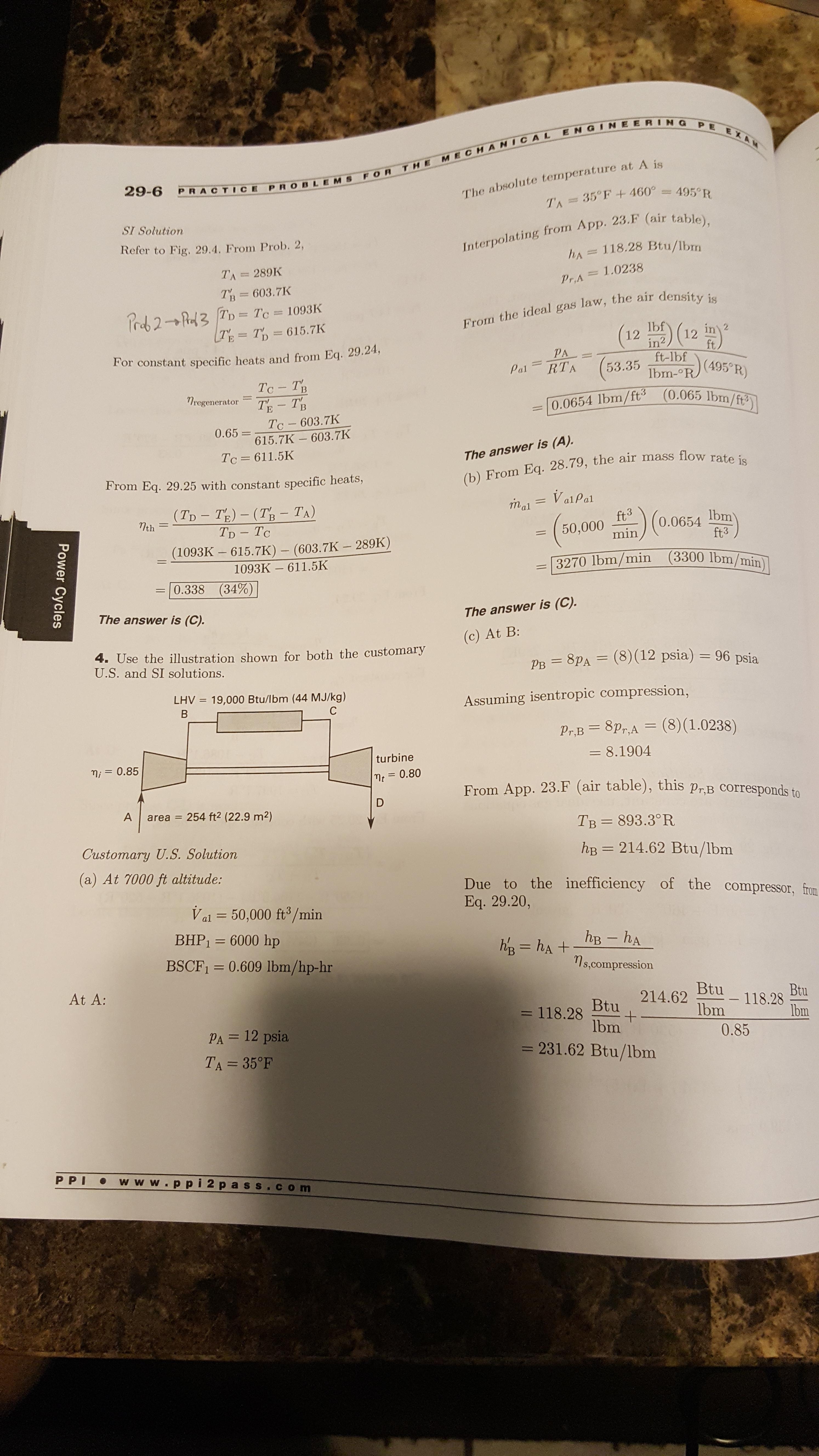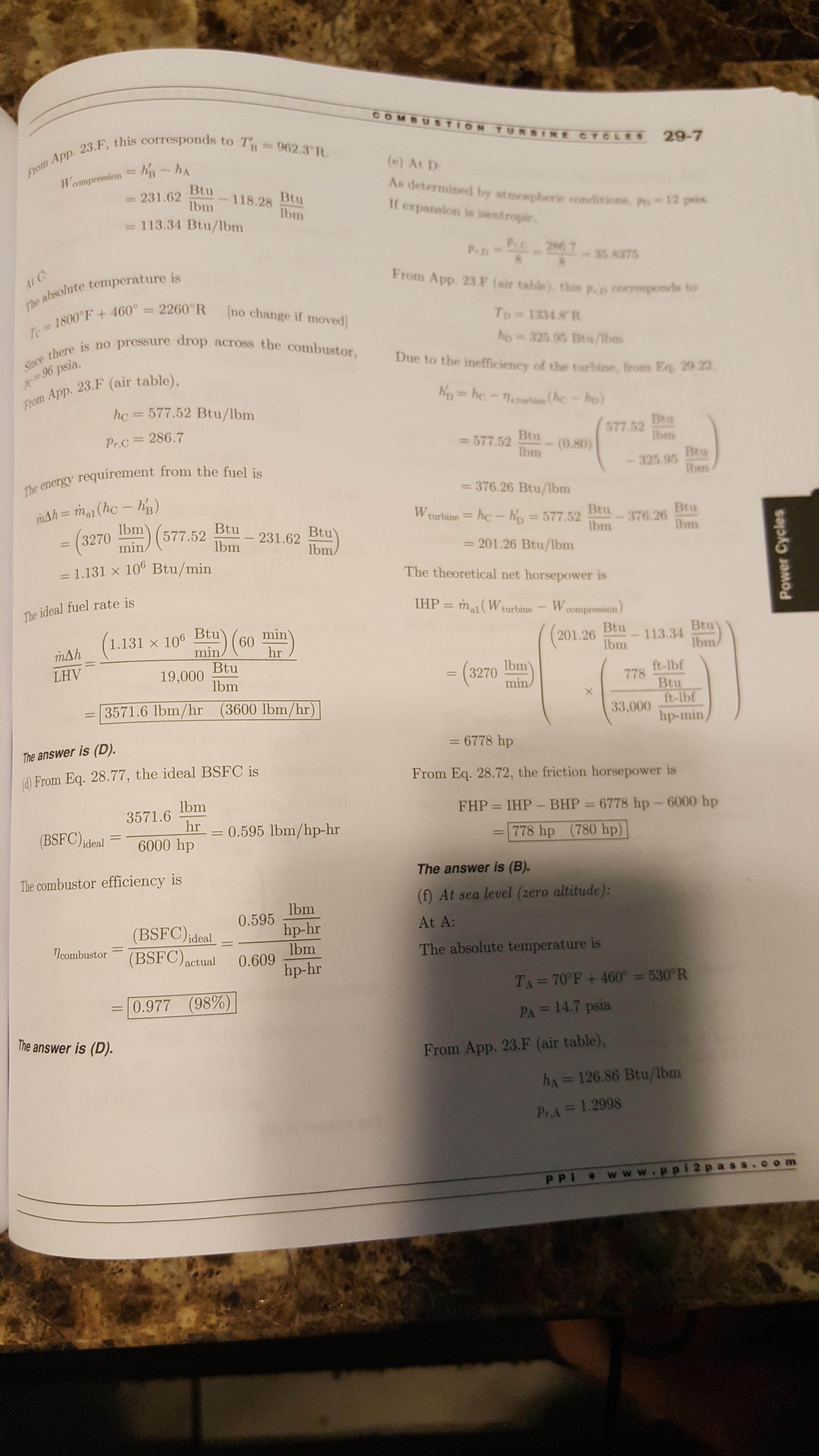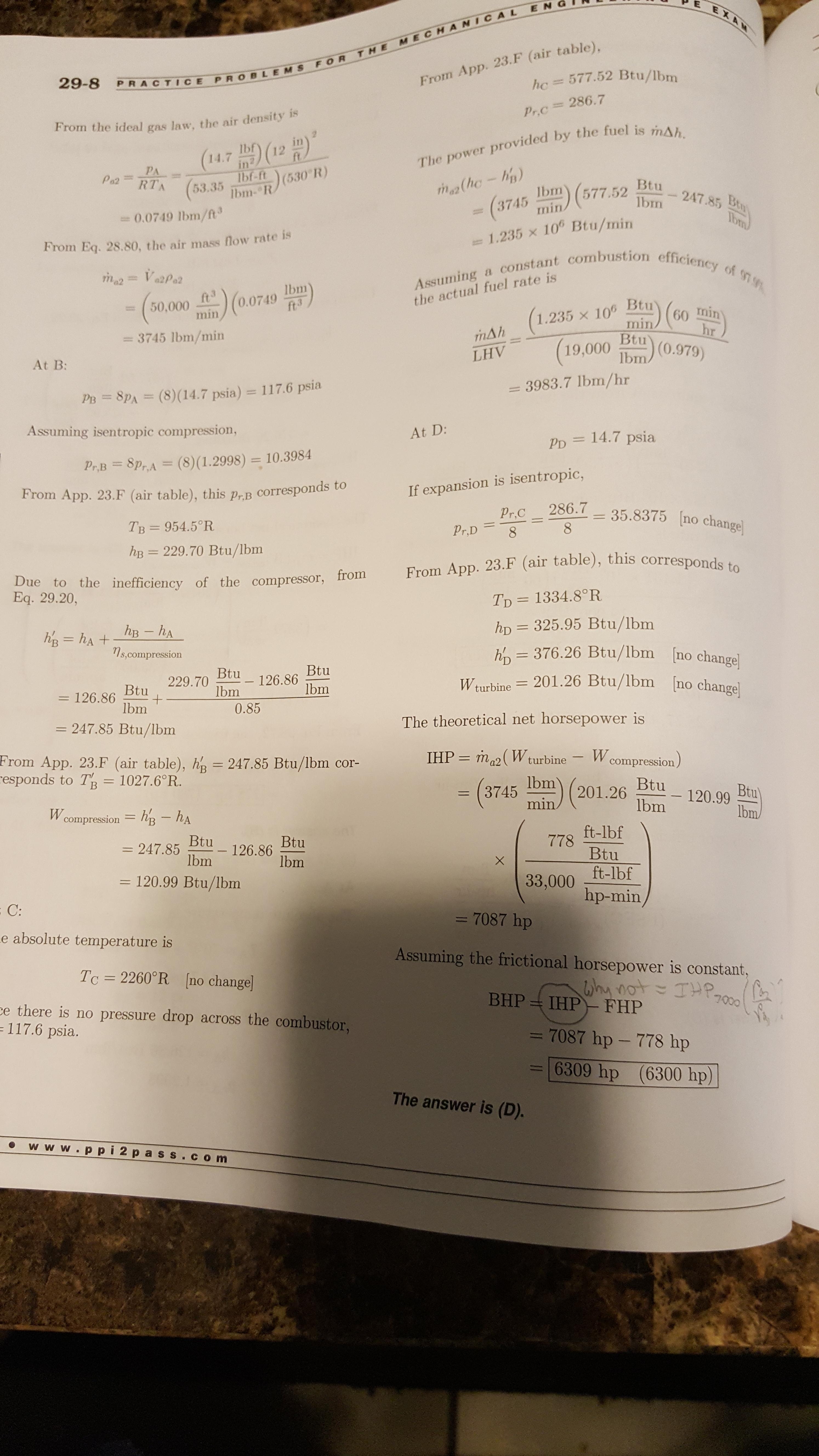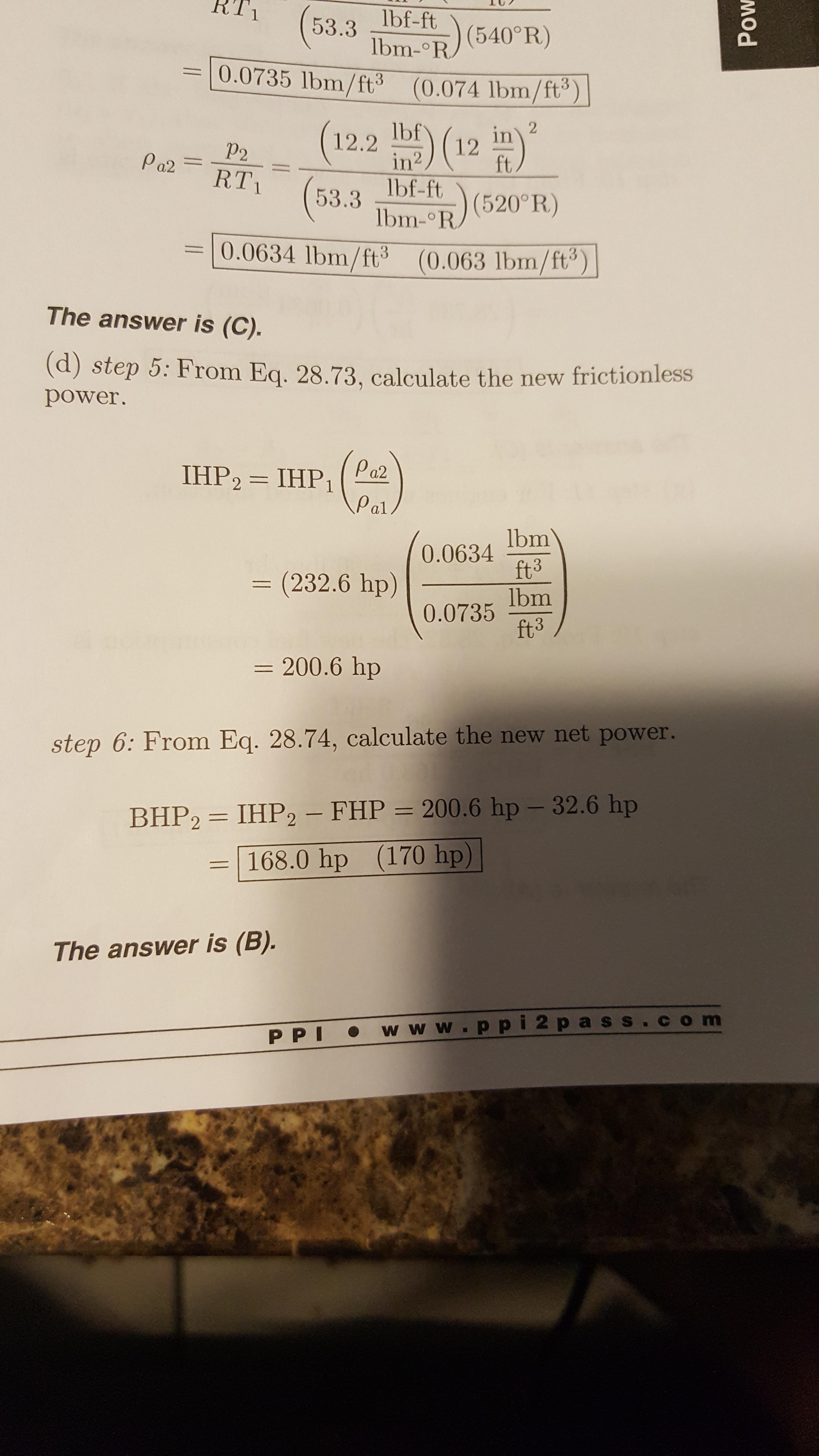I am using the 13th edition of the Mechanical Engineering Practice Problem book to help prepare for the upcoming PE. I am confused about one of the questions. Namely, Section 29, Prob 4, part f. This solution is eventually obtained by rearranging Eqn 28.72. where BHP = IHP - FHP.
What's throwing me off is how IHP is calculated. I thought it was simply a conversion using densities of the two altitudes by use of Eqn 28.73.
So when I solved, I used IHP@0ft = (density@0ft/density@7000ft)*(IHP@7000ft from part e) = 7762 hp > book answer of 7087 hp using method of (mdot * delta work).
Please explain what my solution is not accounting for because it's driving me crazy. I used the same method as used from a Section 28, problem 8, part d.
What's throwing me off is how IHP is calculated. I thought it was simply a conversion using densities of the two altitudes by use of Eqn 28.73.
So when I solved, I used IHP@0ft = (density@0ft/density@7000ft)*(IHP@7000ft from part e) = 7762 hp > book answer of 7087 hp using method of (mdot * delta work).
Please explain what my solution is not accounting for because it's driving me crazy. I used the same method as used from a Section 28, problem 8, part d.







